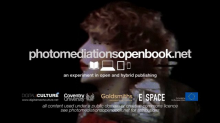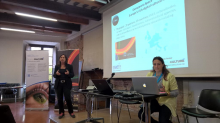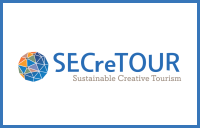-
Join the
Digital Meets Culture
Newsletter! -
Join the
Digital Meets Culture
Open Newsroom! If you have interesting news and events to point out in the field of digital cultural heritage, we are waiting for your contribution.
If you have interesting news and events to point out in the field of digital cultural heritage, we are waiting for your contribution.
-
Free text
-
-
Upcoming events
-
 online, 13th December 2024
online, 13th December 2024The PRESENCE project aims to enhance how people interact in XR environments by developing tools that make virtual experiences feel more realistic, immersive, and engaging. PRESENCE is working in three core areas: Holoportation: We aim to improve realistic visual interactions between … Continue reading →
 Collaboration agreement has started between CREATOUR Observatory at the Centre for for Social Studies, University of Coimbra, in November 2024
Collaboration agreement has started between CREATOUR Observatory at the Centre for for Social Studies, University of Coimbra, in November 2024The SECreTour Network is growing! The SECreTour project has established a new collaboration with CREATOUR® Observatory on culture and tourism for local development at the Centre for Social Studies, University of Coimbra, Portugal. The CREATOUR Observatory is an internationally recognized … Continue reading →
Topic: interactivity

In a recently published post on the Cultural Studies Leuven blog, Prof. Fred Truyen (KU Leuven), coordinator of the E-Space project’s photography pilot, offers some reflections on his experience with Intellectual Property Rights (IPR) in the successfully concluded EuropeanaPhotography project… Continue reading

The E-Space creative marketing workshop “Digital Culture, Social Media and Innovation for the Cultural Heritage” is taking place in Pisa on 9 October. It will explore different ways of communicating cultural contents with the use of new media and will show how a greater audience can be reached by combining the power of social media and storytelling. The event, hosted by Fondazione Sistema Toscana in cooperation with Invasioni Digitali, is being held in the framework of the Internet Festival. DigitalMeetsCulture is official media partner. Continue reading

In a recent post of hers entrepreneur, citizen science advocate and author Chandra Clarke observes the last years’ developments of citizen science and makes some predictions based on the available data. Continue reading

Prof. Fred Truyen of KU Leuven recently published an interesting article on his Digital Culture blog, under the title “Europeana Space Photo pilot: Innovate your photographic heritage … and your future business!” The article tells the commitment the E-Space project is devoting through its Photo Pilot to demonstrating a range of possibilities offered by apps, Europeana API’s and a multitude of tools developed by the open source community to come up with innovative models involving historical and present-day photography, with monetising potential and investment appeal. Continue reading

«Citizen science is a way for average people, like you and me, to do real “help answer the big questions” science, even if you never finished high school». So Chandra Clarke, president of editing and proofreading company Scribendi.com, recently speaking at the TEDx Chatham-Kent event on the topic of citizen science. Her talk highlighted the potential of amateur science and the various ways in which the public can engage in academic research. Continue reading

At the Europeana Creative “Culture Jam” event, closing conference of the widely praised Europeana Creative project at the National Library of Austria (July 9th and 10th), the Europeana Space project was brought to the attention of the creative industry scene in Austria. During various sessions the EuropeanaTV pilot was demonstrated and the upcoming hackathons and business modelling workshops were announced. Continue reading

Photomediations: An Open Book, produced by one of the pilots of the Europeana Space, has recently enjoyed an enthusiastic response from a variety of international audience. Continue reading

In February 2015, a lab test was designed to investigate the usability of the Berlin Wall application, which is representative of an interactive TV application using valuable cultural heritage content. The test was conducted with the on-air application. Test participants were … Continue reading




























